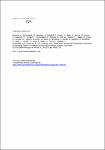Estimating true incidence of O157 and non-O157 Shiga toxin-producing Escherichia coli illness in Germany based on notification data of haemolytic uraemic syndrome
Kühne, Anna
Bouwknegt, M.
Havelaar, A.
Gilsdorf, A.
Hoyer, P.
Stark, Klaus
Werber, Dirk
Shiga toxin-producing Escherichia coli (STEC) is an important cause of gastroenteritis (GE) and haemolytic uraemic syndrome (HUS). Incidence of STEC illness is largely underestimated in notification data, particularly of serogroups other than O157 (‘non-O157’). Using HUS national notification data (2008–2012, excluding 2011), we modelled true annual incidence of STEC illness in Germany separately for O157 and non-O157 STEC, taking into account the groups’ different probabilities of causing bloody diarrhoea and HUS, and the resulting difference in their under-ascertainment. Uncertainty of input parameters was evaluated by stochastic Monte Carlo simulations. Median annual incidence (per 100 000 population) of STEC-associated HUS and STEC-GE was estimated at 0·11 [95% credible interval (CrI) 0·08-0·20], and 35 (95% CrI 12-145), respectively. German notification data underestimated STEC-associated HUS and STEC-GE incidences by factors of 1·8 and 32·3, respectively. Non-O157 STEC accounted for 81% of all STEC-GE, 51% of all bloody STEC-GE and 32% of all STEC-associated HUS cases. Non-O157 serogroups dominate incidence of STEC-GE and contribute significantly to STEC-associated HUS in Germany. This might apply to many other countries considering European surveillance data on HUS. Non-O157 STEC should be considered in parallel with STEC O157 when searching aetiology in patients with GE or HUS, and accounted for in modern surveillance systems.
No license information

